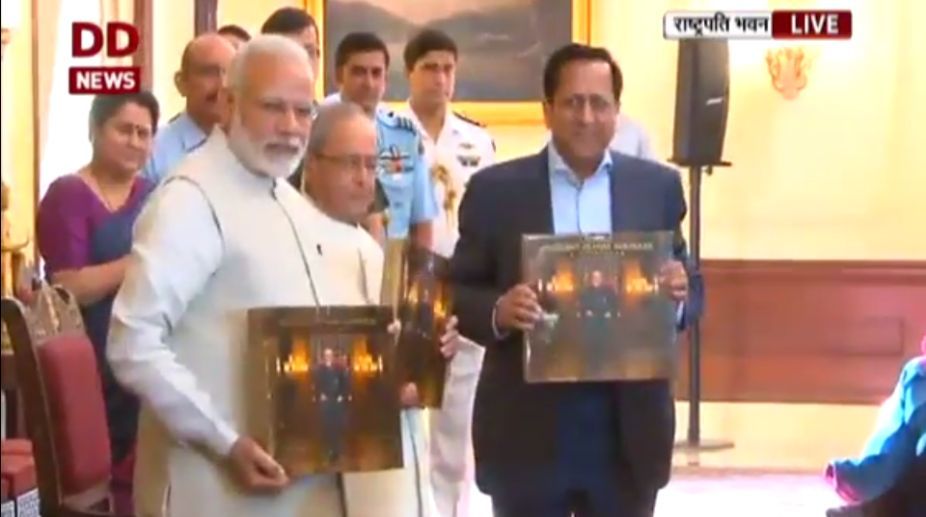Assam’s grand Jhumoir show: 8,000 performers, PM Modi to attend
Assam’s Jhumoir Binandini event on February 24 will feature over 8,000 performers showcasing the traditional Jhumoir dance at Sarusajai Stadium, Guwahati.

(PHOTO: DD News)
Rarely does one come across a President of the stature of Pranab Mukherjee. A multi-faceted personality, President Mukherjee came across, to all those who met him, as a warm and gracious person. An astute politician, scholar and leader, he is also a genial host. His keen sense of humour has helped calm many a turbulent situation in all the various offices he has held. As he soon demits office, he will be missed by all ~ his personal staff, Rashtrapati Bhavan officials, residents of President’s Estate and the media.
Capturing him in all these profiles is a photographic essay presented in a new book published by The Statesman. The 340-page book, released on Sunday by Prime Minister Narendra Modi, covers the Presidential tenure of Mukherjee in his various roles as the nation’s First Citizen. Curated and photographed by Varun Joshi, the images in “President Pranab Mukherjee ~ A Statesman” present a rare insight into the various roles of President Mukherjee. Of the 566 photographs in the book, 460 were taken by Joshi and the rest 106 were drawn from the Rashtrapati Bhavan archives to cover his Presidency.
Advertisement
The foreword to the book, written by The Statesman Editor Ravindra Kumar says, “Because he had been such a good politician, many insiders ~ and some commentators ~ were apprehensive about his ability to raise himself to the job of President…Over the next five years, we watched in awe as he elevated the office he occupied and infused his Presidency with the qualities that our Constitutional scheme demands while preserving the best conventions that the republic had built up…”
Advertisement
The book has been divided into seven chapters, each touching upon a facet of the President’s role and therein his personality. Interspersing the candid photographs are some of the President’s profound thoughts expressed at various functions and interactions. The first chapter, “Ambassador extraordinary” looks at his diplomatic engagements as Head of State. His meetings with various delegations, both domestic and foreign, give an insight into his keen interest in what concerns each strata of society.
In “First citizen in action” one is presented with a visual delight of President Mukherjee’s interaction with people from all walks of life. Concern for the welfare of fellow citizens comes through in each of his engagements, be it with children, rural folk, women or the youth. “Visionary scholar” documents Mukherjee’s abiding interest in India’s future as he stressed upon the importance of education in the lives of people. He even assumed the role of a teacher on the eve of Teachers’ Day. As the “Nation's conscience”, his faith in pluralism is amply reflected in his engagements with people at various levels. He has always respected diversity and advocated tolerance and respect for contrary views. This, he has said, is essential in a pluralistic society like India.
A former journalist, President Mukherjee has always enjoyed an abiding relationship with the media. In “Scribe's reminiscences”, his several formal and informal interactions with members of the media, including during his tours within the country and abroad, bring out this aspect. As “Supreme Commander” the President’s role is largely ceremonial. Yet President Mukherjee manages to lend that personal touch.
The final chapter focuses on little known sides of the President’s personality. Few know his deep faith in religion. And his humane as well as deep sense of justice are to be seen in little vignettes that Joshi was quick to capture.
Advertisement